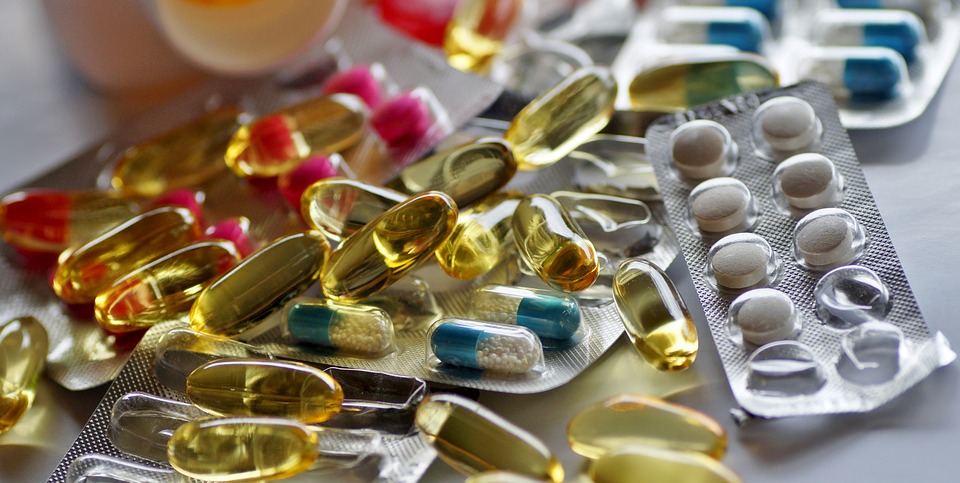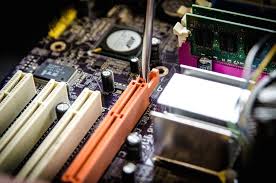CAIRO - 19 May 2019: Research and Development (R&D) has been a driver for many innovations worldwide in both the manufacturing and services sectors. These have served to fulfill consumers’ unlimited needs and demands, as well as to reduce the costs of producers maximizing their profits.
Yet Egypt’s investment in R&D, a critical element for expanding and developing manufactory of capital goods and technologies compatible with the country’s infrastructure, remains quite low despite the fact that balance of payments (BOP) deficit would gradually decrease or even be eliminated, and different goods would be available at reasonable prices for consumers if we invested more in R&D.
The US National Science Foundation (NSF) defines three types of R&D: basic research, applied research and development. The first is gaining further knowledge of the subject under study without specific commercial objectives. The second is developing a means to fulfill a recognized need with specific market objectives. The third is the “systematic utilization of the knowledge or understanding gained from research toward the production of useful materials, devices, systems, or methods, including design and development of prototypes and processes.”
It is safe to say that Egypt is lacking on all three fronts, across several key industries, and there is generous room for improvement.
“R&D in Egypt is almost non-existent,” Bahgat El Dahesh, a member of Localization Committee at the Federation of Engineering Industries, says. He lists three reasons why the segment is weak; the first is the lack of self-confidence, despite the great know-how Egypt has embodied in open-minded engineers and labor. That makes manufacturers resort to replicating ready-made products designed abroad. He adds that there is a gap between the industrial sectors serving market needs and the outstanding academic research that the country produces.
A second issue is spending, epitomized in the unwillingness to pay for highly qualified calibers to conduct R&D and train others. Finally, the state does not provide incentives for manufacturers running R&D departments, although it does for manufacturers that export.
Houssam Abdel Aziz, a board member at the Chamber of Engineering Industries, adds that a key issue is the decline in education, as it has been outdated and “not able to produce technical qualifications for 2018.” Back in the 1960s, the Nasr Company for Cars used to produce complete and assembled engines, but that ceases to be the case, he argues.
During the same period, Egypt designed, validated and manufactured ships, aircrafts, air conditioners, sewing machines, and rail coaches. Egyptian companies even overhauled sugar factories locally as well as in Sudan and Iran. “In the 1980s, Egypt manufactured a heavy truck from scratch, outsourcing only the engine and gearbox,” Abdel Aziz clarifies.
For Egypt to go back to its golden years, Abdel Aziz argues, the society’s condescending view of technical education must change to increase youths’ interest in technical education.
“There is no manufacturing without R&D. That is why many factories shut down two or three years after launching. When they export, they are not able to adapt their products upon the clients’ requests because they just assemble products instead of creating products from scratch,” El Dahesh explains, highlighting that Chinese producers, on the other hand, study the markets they want to penetrate and fulfill their needs through R&D.
El Dahesh stresses the importance of promoting R&D culture as it is a key factor for innovation, controlling quality, and consumer price, praising some manufacturers in Egypt for reverse engineering, which he considers “a step forward for development.” He gives an example of an Egyptian company that used to produce stabilizers for high-quality refrigerators, partnering with a European company. However, after the end of the partnership, no care was given to R&D, so their clients switched to importing stabilizers from South Korea as they proved better in terms quality, price and suitability.
But there seems to be some hope for the sector. El Dahesh is happy that some Egyptian manufacturers have started to create engineering departments to work on the implementation phase of R&D; the last of four stages that include the esthetic design, engineering the design and coming up with a prototype. Designing from scratch, however, is still largely lacking in the market, despite some reverse engineering attempts. The aesthetic stage is the outer design, which should match the dominant market tastes. The engineering phase consists of structure and function, and the prototype phase includes testing the usability through simulations, 3D printing, verification and validation, as well as developing software programs and control panels.
Abdel Aziz is optimistic about how reverse engineering has spread, enabling manufacturers to be more cost efficient while developing their products’ features. “Reverse engineering would lead to the development of the country’s feeding industries,” Abdel Aziz maintains.
He also argues that we should keep our expectations in check as the localization of components would be a milestone to help decrease imports and boost designing locally. He explains that developing countries are not expected to frequently come up with innovations. Instead, they should follow the pace of China, which succeeded in producing existing goods at lower costs and with simpler features.
Yet despite an overall state of stagnation, R&D advancement differs from one sector to the other; so while Egypt just saw its first smartphone, other sectors aren’t investing as much in the segment.
Pharmaceuticals
Pharmaceuticals constitute a strategic sector that has taken a major hit in Egypt following the currency flotation in November 2016. Chairman Consultant for Quality Affairs at Sigma Pharmaceuticals Group Hussein El Dars says that R&D helps the sector in Egypt fulfill the goals of manufacturing raw materials and formulations, making drugs more effective and available at reasonable prices.
Pharmaceutical companies worldwide produce either molecules (formulas in pharmaceutical terms), formulations or raw materials, but not the two or three together.

Drugs - CC via Pixabay/ivabalk
Egypt has 160 factories, of which seven are government-run while the rest belong to the private sector. Yet only the seven government-run companies, such as El Nasr, produce raw materials, El Dars explains, and they produce limited types because only mass production makes raw materials cost effective. They are, moreover, normally only produced by shareholding companies. With the cost of imported raw materials increasing post the currency float, companies have been struggling.
“To change the source of the raw material is a problem, since it is part of the drug registration process,” he adds. This has kept many companies in Egypt from switching to lower-cost raw materials after the floatation.
Pharmaceutical companies in Egypt receive patents from the Ministry of Health for different formulations and combinations of molecules developed abroad after providing the reference (original) product that has been tested and approved in one of 21 designated countries, El Dars explains. He adds that no Egyptian company currently invents new molecules.
The formulation can be different from one country to another to ensure drug stability, which is the ability of the pharmaceutical dosage form to maintain the physical, chemical, therapeutic and microbial properties during the time of storage and usage by the patient. These are all factors that make it easier and more time efficient for local companies to invest in R&D to be able to customize formulas according to their needs.
“We have to take into consideration storage and expiration dates. The packaging is designed according to the temperature and humidity levels. The other element to consider is [the human aspect],” El Dars says, clarifying that these factors are considered by Egyptian companies when manufacturing drugs for both local consumption and exportation. A case in point is his company, Sigma, which exports to eight to 10 countries.
El Dars believes the major and almost only obstacle hindering R&D in the Egyptian pharmaceuticals sector is how it will affect the prices of medicine. Medicine prices have to be approved by the Central Administration for Pharmaceutical Affairs at the Ministry of Health, which not only minimizes the companies’ profits, but also often leads it to incurring losses. That means that with the hike in costs of raw materials after the float, which are predominantly imported, the budget allocated for R&D has become minimal to refrain from drastically increasing the prices of medicine. El Dars adds that production of some medicines have even stopped altogether because of the increasing costs.
He explains that giant companies worldwide do not develop new drugs and that they just buy the molecules from research centers, specifically those located in Japan. He explains that they can buy 10 medicines, and only two would work, adding that drugs worldwide are protected by a patent for a specific period of time, before they become generic so they can be produced without a permit or license. This explains why treatments are first introduced at high prices before eventually becoming cheaper.
“The pharmaceuticals sector in Egypt is old. We have qualified people in quality control, formulation, stability and R&D. We have very experienced people as well as research and training centers. We are up to date [and] participate in different conferences. Academic centers sometimes develop new molecules and discover shortcomings of existing molecules,” El Dars adds, giving the example of a drug called Shelalageen, which was developed by Egyptian pharmaceutical companies to treat liver and bladder diseases using a plant only grown in Egypt called Khela, which was exported during the sector’s peak in the 1940s and 1950s. But for the sector to further develop or go back to its glory days, however, it will need far more funding.
Electronics
“R&D in the electronics sector faces the same obstacles as R&D in all other industries in Egypt; [the lack of] funding and the small number of manufacturers,” Chairman of the company that launched the first Egyptian smartphone, Egyptian Silicon Industries Co. (Sico) Mohamed Salem says. The country does not have research centers because of the low local demand for innovations serving the manufacturers’ products. Salem explains that the size of the business is one important determinant for whether it would have an R&D department or not.

Motherboard - pixino
However, Egypt is rich in “expertise,” such as pioneers in designing electricity cycles, Salem says. He adds that a key advantage allowing Egypt to develop its R&D segment is the availability of good know-how, including “very talented engineers who have worked for companies in China, France and Japan.”
Salem adds that Sico resorted to foreign research centers to help with the design of the smartphone it launched few months ago, and that the company is trying to bring them to operate in the country as it seeks to cooperate with them in the upcoming period. Sico is currently self-dependent in its manufacturing process to produce devices on the same level of quality as China’s.
Salem mentions that a good opportunity for manufacturers seeking funding for technological innovation is the Information Technology Industry Development Agency (ITIDA). The entity, affiliated with the Ministry of Telecommunications and Information Technology, would study the idea and cost to evaluate the talent needed to design the product. “If successful, ITIDA would provide funding ranging from 60 to 85% of the research project’s cost,” he adds.
White Goods
Abdel Aziz highlights that a considerable number of the local producers have departments that perform internal product verification and validation. What the industry lacks, however, is globally accredited laboratories. This would reduce the validation cost and time for all industry players. Even member countries of Egypt’s Free Trade Agreements are enforcing non-tariff trade barriers, like Saudi Arabia’s SASO (Saudi Standards, Metrology and Quality Organization), which aims to validate products’ quality. This affected Egypt’s exports to one key market. It would take time for manufacturers to re-validate their products in overseas, third-party laboratories to re-penetrate the market and win back lost market share. The Egyptian white goods sector has a good presence in the Arab market and an interest in further penetrating the African market for the increase in consumers’ purchasing power and growth.

Reconditioned Goods - CC via Flickr/Nina Childish
Abdel Aziz concludes that such expansion in African markets would be facilitated by the Tripartite Free Trade Area comprising the Common Market for Eastern and Southern Africa (COMESA), Southern African Development Community (SADC), and Eastern African Community (EAC).
FMCGs
“There is not enough R&D in Egypt. Producers just replicate what is invented in research centers abroad,” Managing Director of Unilever Mashreq Ahraf Bakry says, adding that local manufacturers do not spend enough on R&D because they lack the right mindset.
As for multinationals, R&D is centralized, but they have R&D departments in their local subsidiaries to make formulations they receive from abroad compatible with legal approval regulations as well as with available technology and market needs.
“There are two types of R&D. The short-term one is called progressive and it is about enhancing the product having little return. The other is innovative. It takes a long cycle, but it becomes a hit when accomplished,” Bakry explains.

Shampoo and Conditioner CC via Pixabay/AnnaliseArt
The Unilever manager reveals that many foreign companies have been massively exporting from Egypt, which has turned into a very competitive manufacturing base post-flotation. What also helps boost exports is that goods are becoming increasingly standardized on the global scale.
“There is no need to customize. However, if there is a need, we can do it,” Bakry says, stipulating that Egypt has “great scientists” who have been able to “replicate well” and who highly succeeded abroad.
R&D Around the World
Expenditure on R&D rose to 2.2% of world’s GDP in 2015 from 1.972% in 1996. As for Egypt, R&D expenditure more than doubled during the same period to become 0.72% of GDP instead of 0.21%, according to the World Bank.
World gross expenditure on research and development (GERD) outpaced the global economy in terms of growth between 2007 and 2013, as the rates have been 30.5% and 20.1% respectively, according to the United Nations Educational, Scientific, and Cultural Organization (UNESCO).
“This was largely because the private sector in wealthier countries maintained or increased its own level of spending on R&D over this period, even though public commitment to R&D declined in many of these countries in the context of austerity budgets,” UNESCO reported.
High-income economies contributed 69.3% to GERD in 2013, down from 79.7% in 2007. On the other hand, the share of low and middle-income countries grew to 11.1% in 2013 from 10.1% in 2007. The United States, which gives tax incentives for corporations to conduct R&D, contributed the most to GERD at 28.1%.
China’s share of global GERD rose to 19.6% in 2013 from 10.2% in 2007. Around 84.6% of research spending in China is channeled to experimental development, according to 2013 data.
“Experimental development is systematic work, drawing on existing knowledge gained from research and/or practical experience directed to producing new materials, products or devices; to installing new processes, systems and services; or to improving substantially those already produced or installed,” notes the Organization for Economic Cooperation and Development (OECD) glossary of statistical terms.
China’s expenditure on R&D made up 2.07% of its GDP in 2015. Companies spent 1.09 trillion yuan out of the 1.42 trillion yuan ($206.05 billion) spent on R&D in that year, according to Reuters. The percentage allocated to R&D of the total 35 OECD countries’ GDP reached 2.38% in 2016. Many studies indicated that significant expenditure on R&D leads to economic growth, reflected on GDP in varying degrees.
However, what matters most is not the amount of expenditure on R&D, but linking it to well-defined market needs and business goals to deliver customer value. Since Egypt has a large domestic market and a high return on investment (ROI), R&D investment can be quite profitable for the private sector.




Comments
Leave a Comment